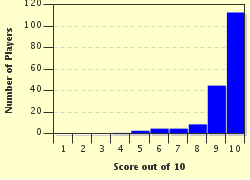Quiz Answer Key and Fun Facts
1. The first rocket to reach outer space was called the V-2. During which war, which began in 1939, was it used?
2. In 1949 a mammal named Albert II became the first of his species to fly in space. What sort of creature was he?
3. 1957 saw Sputnik I become the first man made object to orbit the earth. What does the Russian word Sputnik mean in English? (Its name starts with the same letters as a day of the week).
4. Between 1961 and 1966, the Americans ran a programme which saw two men at a time sent into space. What was the name, the same as an astrological sign, given to this programme?
5. The first man in space orbited the earth in 1961. Which country did he come from?
6. The Americans who went into space were called astronauts. What did the Russians call their space travellers?
7. 1969 was the first time humans walked on the moon. The two astronauts were Neil Armstrong and Edwin Aldrin, but Edwin was known by a different name, which sounds like a noise. What was it?
8. Both the Russians and Americans had permanent space stations in orbit. The Russian version was named Mir. What name was given to the American space station?
9. In 2003, which Asian country, associated with the animal in the picture, became the third to send a human into space?
10. The American space programme was run by NASA, which stands for National Aeronautic and Space ___?
Source: Author
rossian
This quiz was reviewed by FunTrivia editor
NatalieW before going online.
Any errors found in FunTrivia content are routinely corrected through our feedback system.


